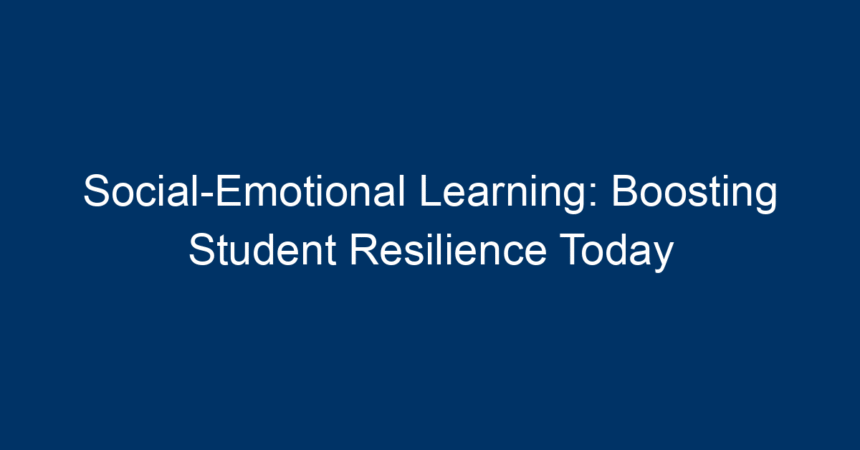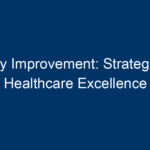In today’s rapidly changing world, the education landscape is shifting to accommodate not just academic success but also the emotional well-being of students. Social-emotional learning (SEL) has emerged as a vital framework that equips students with the skills they need to navigate their emotions, build healthy relationships, and face challenges head-on. This article delves into how social-emotional learning can significantly boost student resilience, fostering both stability and growth in learners.
Understanding Social-Emotional Learning
What is Social-Emotional Learning?
Social-emotional learning refers to the developmental process through which students learn to recognize and manage their emotions, set and achieve positive goals, feel and show empathy for others, establish and maintain positive relationships, and make responsible decisions. SEL is not just a standalone curriculum; it is integrated into all aspects of the educational experience.
The Five Core Competencies of SEL
The Collaborative for Academic, Social, and Emotional Learning (CASEL) identifies five core competencies that form the foundation of social-emotional learning:
- Self-Awareness: Understanding one’s emotions, strengths, and limitations.
- Self-Management: Regulating emotions and behaviors in different situations.
- Social Awareness: The ability to empathize with others and understand social norms.
- Relationship Skills: Forming and maintaining healthy relationships through effective communication and conflict resolution.
- Responsible Decision-Making: Making choices that are ethical, constructive, and respect others.
These core competencies are essential for cultivating resilience in students, enabling them to bounce back from setbacks and thrive under pressure.
The Importance of Resilience in Students
What is Resilience?
Resilience is the ability to adapt well in the face of adversity, trauma, or significant stress. It empowers students to cope with challenges—whether academic, social, or personal. Resilient students are more likely to persevere through difficulties, maintain a positive outlook, and recover quickly from disappointments.
How SEL Boosts Resilience
-
Emotional Regulation: SEL teaches students how to manage stress and emotional turmoil. By developing self-management skills, students can better handle their emotions when facing challenges.
-
Problem-Solving Skills: Through social-emotional learning, students learn to think critically and develop solutions to conflicts or challenges, reinforcing their ability to tackle problems head-on.
-
Building Connections: SEL promotes healthy relationships, enabling students to seek support from peers and adults. Strong support networks are crucial for resilience, as they provide encouragement and guidance.
- Empathy and Perspective-Taking: By enhancing social awareness, students can better understand different viewpoints. This understanding can reduce conflict and promote collaboration, fostering an environment where students feel safe and supported.
Implementing Social-Emotional Learning in Schools
Creating an SEL-Friendly Environment
To effectively integrate SEL into schools, educators need to create an environment that prioritizes emotional well-being:
- Safe Spaces: Establish areas where students feel emotionally safe to express themselves.
- Mindfulness Practices: Implement mindfulness activities, such as meditation or deep-breathing exercises, to help students regulate their emotions.
Curriculum Integration
Integrating social-emotional learning into the existing curriculum is essential. Here are some practical strategies for doing so:
-
Incorporate SEL into Everyday Lessons: Use literature, history, or science lessons to spark discussions about emotions and relationships. For instance, analyzing characters’ decisions in a novel can lead to reflections on empathy and responsible decision-making.
-
Restorative Practices: Implement restorative circles to address conflicts and build community. This practice encourages students to share their feelings and listen to others, enhancing relationship skills.
- Group Projects: Design collaborative projects that promote teamwork and communication. These activities help students practice SEL competencies in real-world situations.
Professional Development for Educators
Educators need training to effectively teach social-emotional learning. Professional development workshops can provide teachers with:
- Strategies for Teaching SEL: Interactive strategies that engage students and facilitate emotional learning.
- Tools for Assessment: Resources to measure student growth in SEL competencies.
The Role of Families and Communities in SEL
Engagement Beyond the Classroom
The development of social-emotional skills should extend beyond the classroom. Family and community involvement is essential for the holistic growth of students:
-
Parent Workshops: Schools can host workshops for parents on how to promote SEL at home. Topics may include effective communication or recognizing emotional cues in children.
- Community Partnerships: Collaborate with local organizations to provide additional resources and support for students. After-school programs or counseling services can further bolster emotional development.
Encouraging Open Dialogue
Fostering an environment where feelings can be openly discussed is paramount. Families should encourage children to express their emotions and thoughts without judgment. This practice helps normalize emotional conversations and reinforces the principles of SEL.
Measuring the Impact of SEL on Student Resilience
Assessment Strategies
To understand the effectiveness of social-emotional learning programs, educational institutions should implement assessment strategies:
-
Surveys and Questionnaires: Use tools to gauge students’ self-reported levels of emotional awareness, regulation, and resilience.
-
Behavioral Observations: Teachers should document changes in student behavior, noting improvements in peer interactions and emotional management.
- Academic Performance Metrics: Track the correlation between SEL implementation and academic outcomes. Schools may find that students with stronger SEL skills perform better academically.
Success Stories
Many schools have reported positive outcomes following the integration of social-emotional learning programs. Higher graduation rates, improved student behavior, and increased academic performance are just a few examples of the benefits reaped from prioritizing SEL.
Conclusion: Building Tomorrow’s Resilient Leaders
As schools adopt the principles of social-emotional learning, they cultivate environments that promise greater resilience and emotional intelligence in students. Investing in SEL today is an investment in the leaders of tomorrow—students who are equipped to handle life’s challenges with empathy, strength, and wisdom.
Actionable Insights
- Start Small: Begin by incorporating one element of SEL into your classroom or home environment.
- Foster Relationships: Encourage open communication and empathetic relationships among students, families, and educators.
- Utilize Resources: Access SEL programs and professional development workshops to strengthen understanding and implementation.
With intentional efforts towards social-emotional learning, we can empower students to thrive both academically and emotionally, paving the way for a more resilient future generation.




